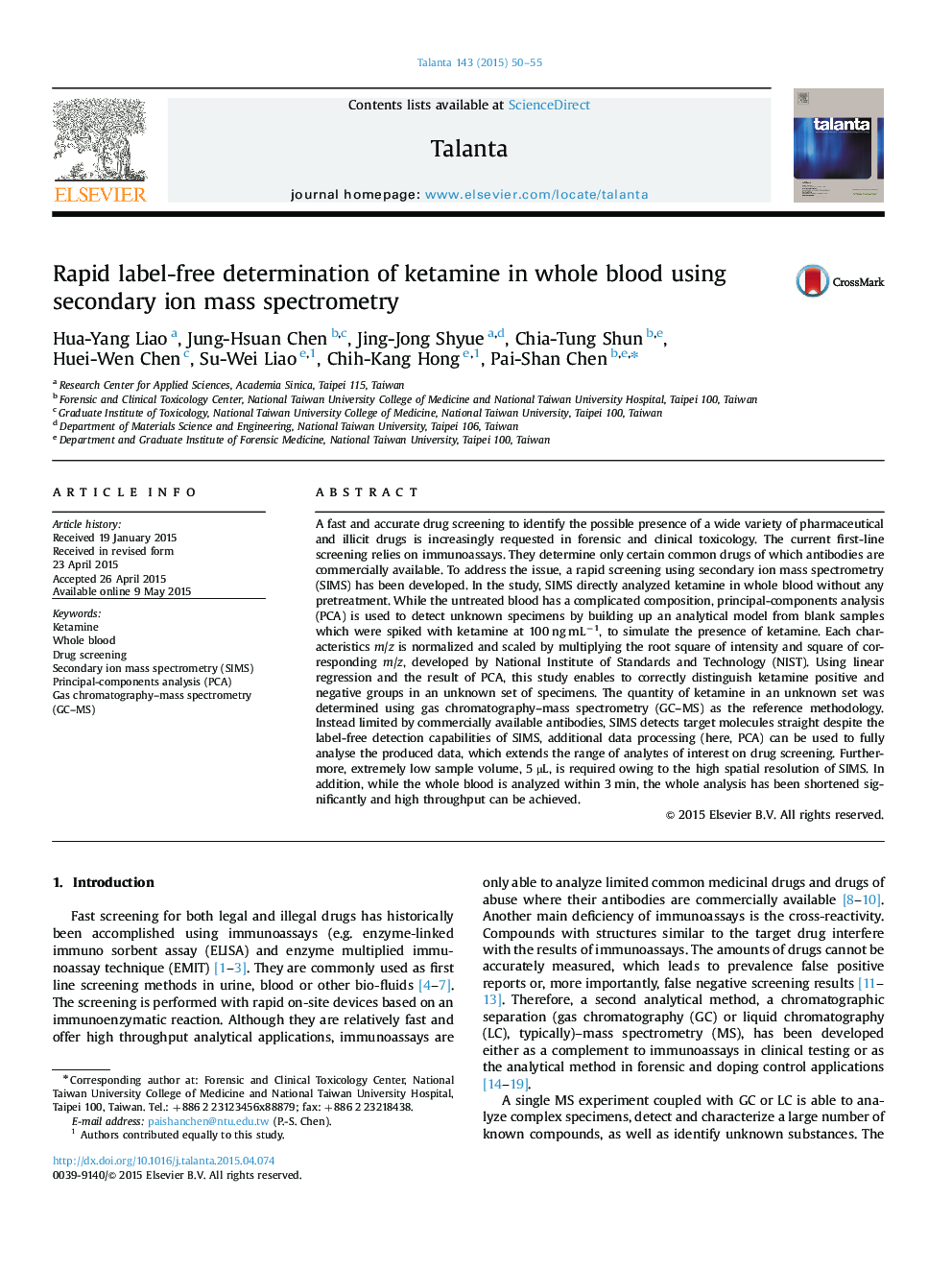| Article ID | Journal | Published Year | Pages | File Type |
|---|---|---|---|---|
| 1241853 | Talanta | 2015 | 6 Pages |
•Secondary ion mass spectrometry has been developed to screen whole blood.•Five µL of whole blood was analyzed directly with no sample pretreatment.•The total analysis was completed within 3 minutes.•The study distinguished ketamine positive and negative groups in unknown samples.•High throughput can be achieved.
A fast and accurate drug screening to identify the possible presence of a wide variety of pharmaceutical and illicit drugs is increasingly requested in forensic and clinical toxicology. The current first-line screening relies on immunoassays. They determine only certain common drugs of which antibodies are commercially available. To address the issue, a rapid screening using secondary ion mass spectrometry (SIMS) has been developed. In the study, SIMS directly analyzed ketamine in whole blood without any pretreatment. While the untreated blood has a complicated composition, principal-components analysis (PCA) is used to detect unknown specimens by building up an analytical model from blank samples which were spiked with ketamine at 100 ng mL−1, to simulate the presence of ketamine. Each characteristics m/z is normalized and scaled by multiplying the root square of intensity and square of corresponding m/z, developed by National Institute of Standards and Technology (NIST). Using linear regression and the result of PCA, this study enables to correctly distinguish ketamine positive and negative groups in an unknown set of specimens. The quantity of ketamine in an unknown set was determined using gas chromatography–mass spectrometry (GC–MS) as the reference methodology. Instead limited by commercially available antibodies, SIMS detects target molecules straight despite the label-free detection capabilities of SIMS, additional data processing (here, PCA) can be used to fully analyse the produced data, which extends the range of analytes of interest on drug screening. Furthermore, extremely low sample volume, 5 µL, is required owing to the high spatial resolution of SIMS. In addition, while the whole blood is analyzed within 3 min, the whole analysis has been shortened significantly and high throughput can be achieved.
Graphical abstractFigure optionsDownload full-size imageDownload as PowerPoint slide
